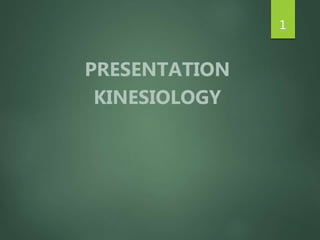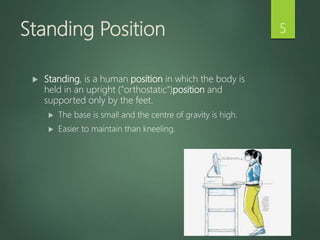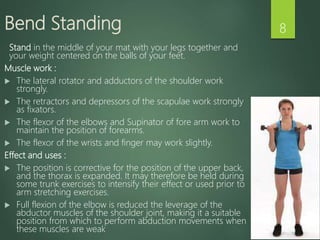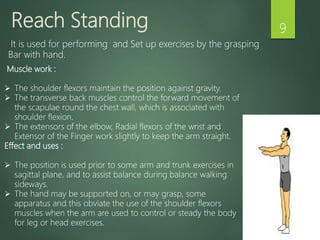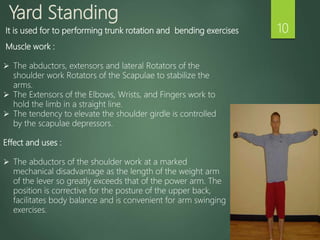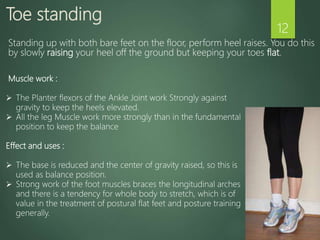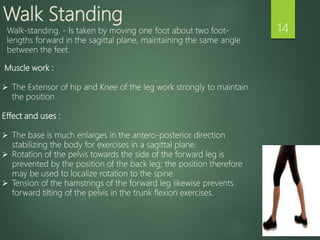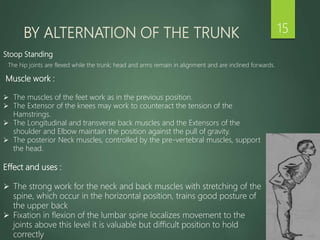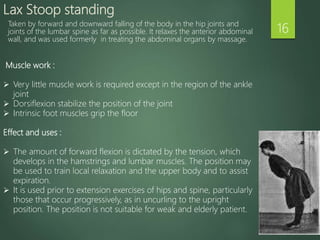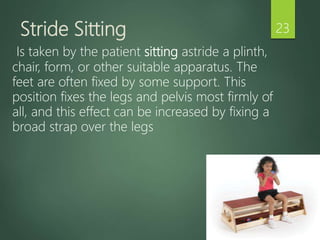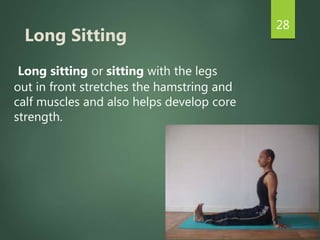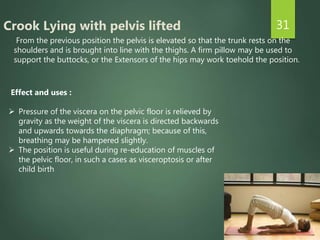This document provides descriptions of various standing, kneeling, sitting and lying positions used in kinesiology. It discusses the key muscle groups engaged in each position and their effects and uses. Some of the positions described include standing, stride standing, half kneeling, kneel sitting, prone kneeling, stride sitting and cross sitting. For each one, the document outlines the muscles worked, the biomechanical advantages of the position, and how it can be used for specific exercises.
